#Sea turtle conservancy
Text
Quick reminder that all profits for this zine will go toward Sea Turtle Conservancy!
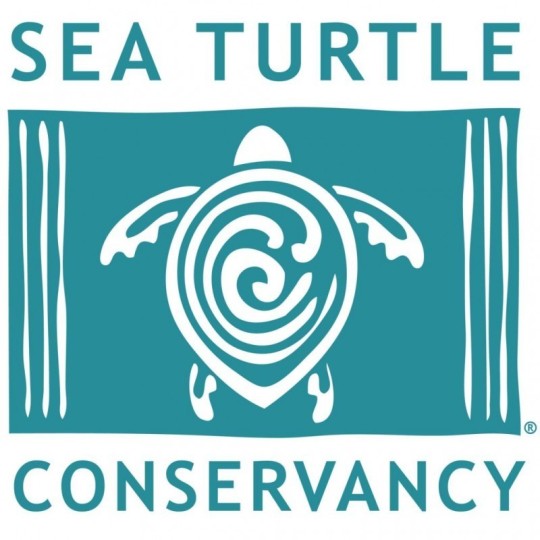
5 notes
·
View notes
Text
Fahlo allows you to track animals; shark, dolphin, polar bear, lions, sea turtles, elephants, penguins, and even giraffes!! Who know what animal is next to track!?!?
Not only is tracking them cool but we are helping Fahlo’s partnerships too. The bracelets that come with the cards are cute and fits everyone (and as someone who has a lot of allergies I would just like to say that no reactions occurred when I first started to wear these bracelets- must be the magic).
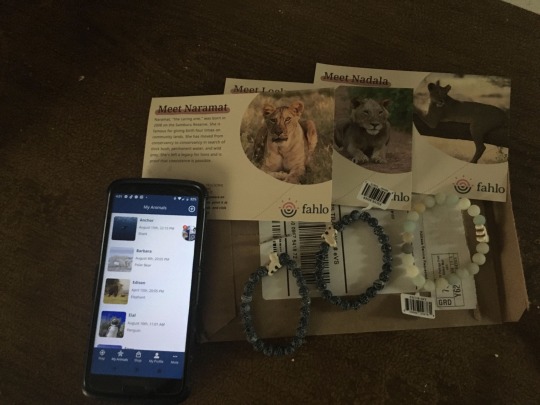
#Track sharks#Track lions#Track dolphins#Track elephants#Track sea turtles#Track polar bears#Track giraffes#Track penguins#Fahlo#Shark week#save the world#save the oceans#save animals#Sea turtle conservancy#Save the elephants#Polar bears international#Saving the blue#Global penguin society#FIU marine conservation ecology lab#Ewaso lions#Not sponsored
6 notes
·
View notes
Photo

This was a two-bracelet weekend for me! A beautiful pearl bracelet made by my sister-in-love Janet (to match my pearl earring) and a sea turtle bracelet from Michael. I’m now the foster parent of a leatherback sea turtle named Lady Jayne, and I can track her movements via the Fahlo app and the Sea Turtle Conservancy. Lady Jayne has traveled 7705 miles since being tagged in Florida in 2018! https://www.instagram.com/p/Cps8POsuHPO/?igshid=NGJjMDIxMWI=
1 note
·
View note
Text
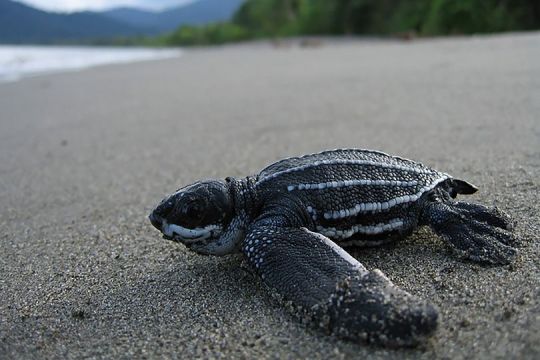
Leatherback sea turtles are the largest turtles in the world and existed at the same time as dinosaurs.
Yet despite surviving for millennia, endangered leatherbacks can't endure humanity's assault on the world's oceans much longer. It's estimated that leatherback populations have declined by 40 percent over the past three generations. It's clear they need a lifeline.
Last week alongside our allies, we filed a legal petition urging the U.S. Fish and Wildlife Service to revise protected critical habitat for the leatherback sea turtle under the Endangered Species Act. Species with federally protected critical habitat are more than twice as likely to recover as species without it.
via: Center for Biological Diversity
Find out more and see what you can do to help:
Leatherback sea turtle (biologicaldiversity.org)
#sea turtle#leatherback turtle#turtle#reptile#herpetology#ocean#marine biology#animals#nature#conservation#environment
252 notes
·
View notes
Text
headline round-up! here’s some recent good news that crossed my feed:
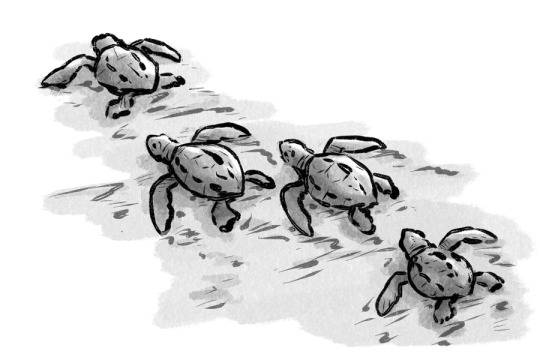
A great nesting season for olive ridley sea turtles in Bangladesh (via Mongabay, May 2023)

Red wolf puppies born in the wild for the second consecutive year, and a captive born pup integrated into the wild litter (via Wolf Conservation Center, May 2023)
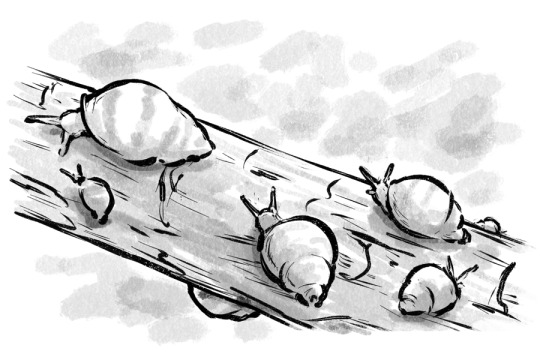
Thousands of critically endangered Polynesian tree snails released in in Tahiti and Moorea (via Smithsonian Mag, May 2023)
557 notes
·
View notes
Text
FUN RANDOM HORSE BREED TIME
Super small lil horse breed known as the Banker Horse is a semi-feral/feral horse breed that lives on the barrier islands off the coast of North Carolina!

They're not considered to be indigenous but are protected and managed by the National Park Service and currently the estimated population of these horses is 400.
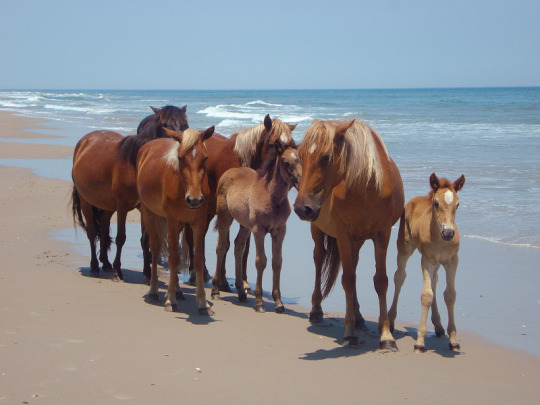
They share ancestry with other Colonial Spanish horse breeds, and genetic markers indicate the share a common ancestory with both the Paso Fino and the Pryor Mountain Mustang.
While there isn't a specific source of these horses, the biggest theories is that they swam to shore when ships wrecked in the nearby shoals, in a region known as the "Graveyard of the Atlantic" due to how many ships its claimed.
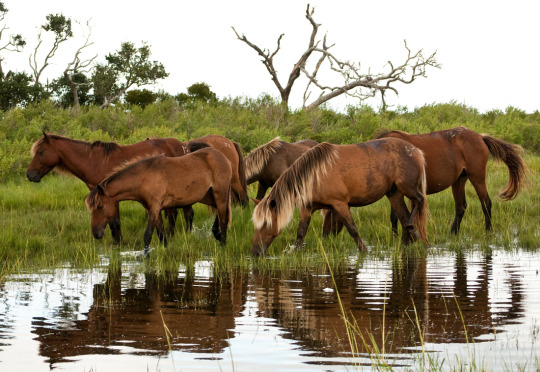
The Foundation for Shackleford Horses has set up a studbook for establishing the Banker horse as its own horse breed. It is registered as a critically endangered breed with the American Livestock Breeds Conversancy.
If you wanna help with the conservation of these cool guys, feel free to check out the link below!
#im making this because of that fake sea turtle post#horses#wild horses#conservation#horse breeds#banker horses#north carolina#animal conservation#endangered breeds#real horses
303 notes
·
View notes
Text
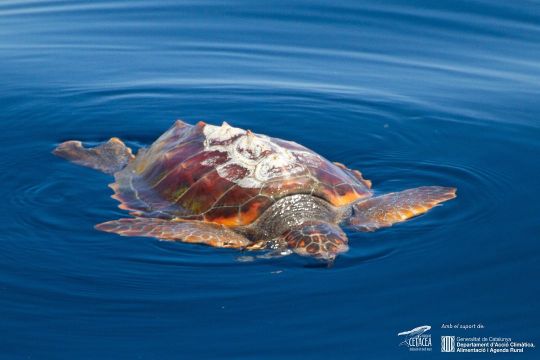

Information translated from Associació Cetàcea.
Photos taken by David Jara and Abel Tomás in the project "Foto-identificació: Balenes i dofins al litoral català" of Associació Cetàcea, with authorization and support from the government.
The loggerhead sea turtle (Caretta caretta) is the most common sea turtle in the Mediterranean sea. It used to be abundant, but nowadays is classified as Vulnerable by the IUCN.
🐢🌊
Loggerhead sea turtles spend most of their lives at sea, but since they're reptiles they need to lay eggs on land. For this reason, females look for calm beaches, without much light nor noise. This is difficult, because humans have occupied almost all the coast.
When the eggs hatch, the newborn turtles are very vulnerable to noise and light, because they depend on them to head towards the sea. A very lit promenade can confuse them and make them go towards the coast instead of towards the sea, with the dangers that this entails.
Climate change can also affect this species. When the eggs are in the sand, the sand's temperature determines the baby's sex. When temperature rises, the usual balance between males and females will shift towards a higher proportion of females. In the long term, this can cause instability in the populations.
Once in the water, dangers continue, because the turtles are susceptible to ingesting floating plastics such as bags or balloons, because they mistake them for their prey: jellyfish. Accidental ingests of plastic are abundant, which cause them intestinal problems and even death. The turtles' risk can also come from main life sources: fishing nets -abandoned or in use- are a deadly trap for these animals.
Protecting sea turtles is in our hands. Let's be careful when we meet these animals, be aware if it's the laying eggs season and avoid ocean pollution.
#natura#animals#wildlife#caretta caretta#sea turtle#sea#mediterranean#wildlife photography#marine conservation#marine animals#wanderlust#earth#climate change#animal conservation#ecology#climate emergency#turtle#turtles
112 notes
·
View notes
Text
Animal of the Day!
Green Sea Turtle (Chelonia mydas)
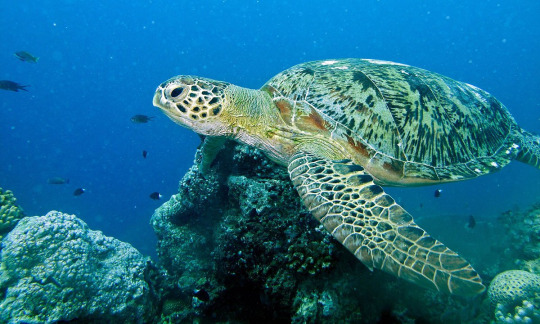
(Photo by Bernard Dupont)
Conservation Status- Endangered
Habitat- Central Atlantic Ocean; Central Pacific Ocean; Indian Ocean; Mediterranean Sea
Size (Weight/Length)- 230 kg; 120 cm
Diet- Seagrass; Algae; Sponges; Small fish
Cool Facts- Being the only member of its genus, the green sea turtle is a gentle giant. Surprisingly, these turtles are not named after their shell color like most sea turtles and instead are named after their green colored fat under their carapace. Green sea turtles are mostly herbivores, acting as lawnmowers for lagoons. Most beaches that these sea turtles use for nesting are fiercely protected by local people, often seeing the turtles as a point of pride for their community. The eggs are carefully relocated for temperature control, warmer eggs become female and cooler eggs become male. With warming temperatures, wild green sea turtle hatchlings result in a disproportionate number of female turtles. In addition, floating trash, boat strikes, and poaching are the most common cause of death for these turtles, even above their natural predators like sharks.
Rating- 12/10 (Their shell is a living ecosystem.)
#Animal of the day#Animals#Reptiles#Turtles#Sea turtles#Marine life#Tuesday#May 16#Green sea turtle#biology#science#conservation#the more you know
162 notes
·
View notes
Text

For the last time, I don't know any Nemos.
Green Sea Turtle (Chelonia mydas)
Oceans worldwide
Status: Endangered
Threats: poaching, pollution, fishing nets, loss of nesting grounds
#sea turtle#turtle#ocean animals#reptile#turtle art#conservation#atlantic ocean#pacific ocean#indian ocean
41 notes
·
View notes
Text
#good news#nature#animals#bangladesh#sea turtle#sea turtles#sea life#olive ridley turtles#conservation#turtles#environment#animal conservation
59 notes
·
View notes
Text
Sunset Duo Zine preview!
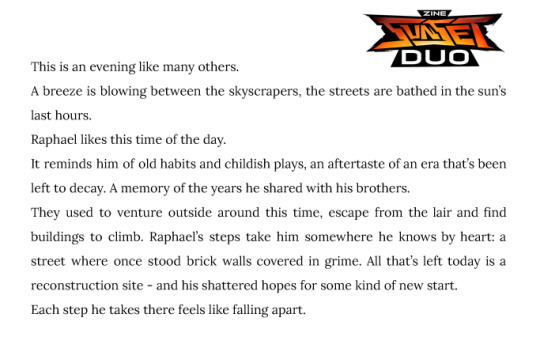
Here's a sneak peak at my contribution to the Sunset Duo Zine! A digital zine focusing on Rise Raph and Mikey ❤🧡 Proceeds will go to the Sea Turtle Conservancy 🐢
You can preorder the stickers on Ko-Fi. The zine will be released in January 2024!
[Transcription under the cut]
This is an evening like many others.
A breeze is blowing between the skyscrapers, the streets are bathed in the sun’s last hours.
Raphael likes this time of the day.
It reminds him of old habits and childish plays, an aftertaste of an era that’s been left to decay. A memory of the years he shared with his brothers.
They used to venture outside around this time, escape from the lair and find buildings to climb. Raphael’s steps take him somewhere he knows by heart: a street where once stood brick walls covered in grime. All that’s left today is a reconstruction site - and his shattered hopes for some kind of new start.
Each step he takes there feels like falling apart.
#sunset duo zine#raph#mikey#writing#zine#rottmnt#rise of the teenage mutant ninja turtles#sea turtle conservancy#rise of the tmnt#tmnt
3 notes
·
View notes
Photo
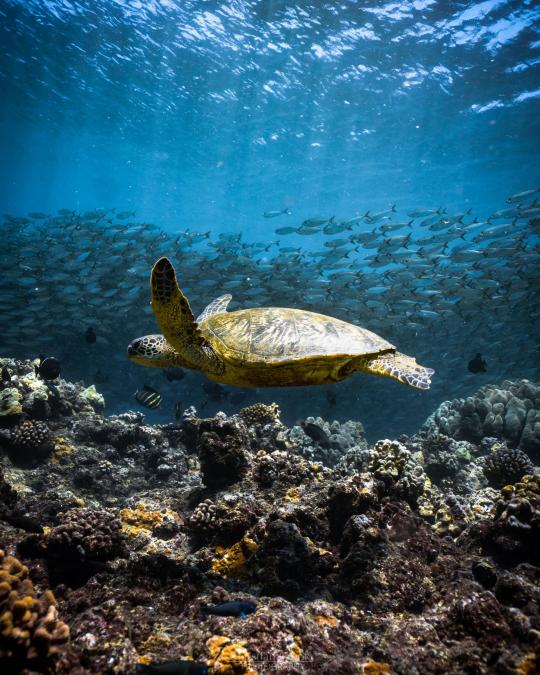
A serene green sea turtle glides through the clear blue water, surrounded by a bustling school of fish. Beneath them, the rich textures of the coral reef add a touch of underwater wonderland magic.
#sea turtle#marine life#underwater photography#coral reef#ocean magic#tropical fish#scuba diving#marine biodiversity#nature#wildlife#clear blue water#ocean conservation#sea creatures#serene beauty#reef ecosystem
10 notes
·
View notes
Text
Poaching Turtles for the Pet Trade
When I was a kid in the 80s, I remember hearing about tortoise shell glasses–also known as horn-rimmed glasses–that were made from the shells of real sea turtles and other chelonians. They were considered trendy when they first appeared in the 1920s, though by the time I came around horn-rimmed glasses were supposedly the mark of uncool nerds. Of course, actual tortoise shells were no longer used as the trade in sea turtle parts was banned in the 1970s by the Convention on International Trade in Endangered Species (CITES), an agreement among almost all the countries in the world.

There’s been illegal poaching of sea turtles since then for culinary, medicinal and ornamental use, but growing awareness has cut down on demand on the black market. Unfortunately, their terrestrial cousins are facing increased threats from poachers, not just as food or medicine–but as pets.
Exotic pets are any non-domesticated animals kept as pets, like birds, reptiles, fish, and wild mammals. Some of these species are easy to breed in captivity, such some freshwater fish kept in aquariums. But many are captured from wild populations; many parrot species, for example, are threatened with extinction simply by how many are trapped for the pet trade.
There are a lot of responsible exotic pet owners and breeders out there, to be sure. Unfortunately, the trade is badly marred by a proliferation of poachers, and people whose only thought is to have the coolest, rarest, or most impressive endangered species in their collection. Think of wealthy people with pet lions, tigers, and other big cats, or poachers capturing rare reptile species to sell to the highest bidder. In spite of all the education done by responsible exotic pet enthusiasts, the bad apples make all too big an impact on wildlife populations.

It’s estimated that the global exotic pet trade may be worth over 40 billion dollars; almost half of that may be illegal. Demand for these animals largely comes from North America and Europe, while the countries whose wildlife is most frequently poached are developing nations that have a lot of species biodiversity. Because wildlife may be shipped all over the world rather than under a single jurisdiction, it’s difficult to track or stop black market trade in wildlife, to include endangered species.
Turtles are no exception. Wildlife officials have seen an increase in poaching of tortoises and freshwater turtles in recent years due to the demand of the exotic pet trade. Because these animals often reproduce slowly, and only after they are several years old, breeding them can require more time and patience than unethical dealers may want to invest. And as turtles are famously slow, it’s all too easy for poachers to pick them up and carry them away.
Poaching turtles has some pretty negative consequences. Over half of the world’s 360 species of turtle and tortoise are being pushed toward extinction by the illegal exotic pet trade. It’s not just turtles in tropical areas that are being stolen, though. The United States is seeing thousands of turtles being illegally exported out of the country. From 1999 to 2017, exports of mud turtles (Kinosternon spp.) rose from 1,844 to 40,000, while musk turtles (Sternotherus spp.) saw an export increase from 8,254 to more than 281,000. And other species have seen similar increases both in the United States and beyond.

When all the turtles of a given species are removed from an area, it has a damaging effect on the ecosystem. Every species has interdependencies with others, and when poaching turtles leads to their extirpation–or even entire extinction–they take with them all the relationships they had with other animals, plants, microbes, and other organisms in their home ecosystems. That leads to less biodiversity, weaker ecosystem health, and potentially the extinction of species that were dependent on the now-missing turtles.
The rise of the internet and social media has been a double-edged sword for wildlife. On the one hand, it’s made getting information about the challenges wildlife face much easier to access, and facilitated a lot more necessary conversations about these animals and their habitats. After all, I likely would have a harder time getting the information in this article to you if I were limited to newspapers, magazines, or other physical media that only come out at certain intervals or only in limited regions.
However, there’s a plethora of videos and other media portraying exotic pets as cool and trendy, but neglecting to mention how much work they may need for proper care. Additionally, since most of the internet isn’t professionally edited, anyone can write anything they want. This means that inaccurate information can be quickly and easily passed around, much to the detriment of the animals receiving inadequate or harmful care. And turtles, which can live several decades, may be sentenced to a shortened lifespan consisting of poor health and suffering.
Thankfully enough responsible caretakers of these animals put forth information on proper care, and realistic looks at how much work it takes to give these animals the best life possible in captivity. We cannot duplicate a wild life for them, but we can at least give them the right food, enclosure, and enrichment. So the best thing good exotic pet owners can do is educate, educate, educate. If you have exotic pets, be open about the work you put in giving them good lives. And if someone makes a suggestion that could lead to even better care, be receptive to that new information rather than getting defensive. If you’re trying to help educate someone who may be new to caring for their exotic pets, try to keep things positive and supportive so that they don’t feel attacked (though there’s not much you can do if they decide to double down on their inadequate husbandry instead.)

It’s also incredibly easy for people to acquire all sorts of exotic pets. Major chain pet stores may have reptiles, amphibians, birds, and more, and employees may not always have accurate information on how best to care for them. Even independent pet stores vary in quality and understanding of exotic animal care. Many people go to large exotic pet trade shows, where hundreds of vendors proffer thousands of snakes, lizards, insects, spiders, birds, and more to anyone with cash to spend regardless of experience or intent. Craig’s List and similar websites offer opportunities for people to sell exotic wildlife to others in their area with little oversight. And for those who don’t want to have to leave the house, exotic animals can even be bought online and shipped right to your door.
While there are certainly shops and dealers who are mindful of the negative ecological impact of the trade in wild-caught turtles and other wildlife, others aren’t so scrupulous. If you are someone looking to acquire an exotic animal, it’s best to be very particular about sourcing; if a seller can’t tell you much about where an animal came from (for example whether it was captive-bred or wild-caught), find a different source. Avoid endangered or threatened species; even legal trade can encourage illegal black market demand for these species. If it seems too good to be true–a rare animal available for sale, or one selling for an incredibly good price–there’s probably something sketchy in its origin.
Consider giving a home to rescued or otherwise “secondhand” exotic pets, to include turtles. A lot of them end up rehomed or even abandoned because people buy these animals and then either don’t understand how much work they take, or simply get bored with them. And again, turtles’ long lifespans often work against them as few people keep a turtle for its entire decades-long life. Rescues do a lot of good work to help these discarded animals find better homes, and are also often very good sources of information on proper care.

You can also make a difference by simply not purchasing exotic pets in the first place, which reduces the demand for them. The normalization of wildlife as pets creates a setting in which these animals are more readily caught and traded because “Well, it’s okay because those other people are doing it!” There are already tons of domesticated pets–dogs, cats, rabbits, rats, mice, guinea pigs, and more–in need of homes. Sure, they may not be as trendy as sugar gliders, bearded dragons, or rare turtles. But as domesticated animals they have been specifically bred to be around humans and be our companions. They’re much more suitable as pets than the truly wild animals that are passed around in the exotic pet trade–and certainly more than those that were taken directly from the wild and which can no longer contribute their genes to wild populations.
Finally, instead of spending potentially hundreds of dollars on a wild-caught turtle or other animal, try giving that money to a nonprofit organization that works toward wildlife conservation instead. The Orianne Society, for example, focuses on reptile and amphibian conservation. And the Turtle Conservancy, as the name suggests, specifically exists to help promote the protection of endangered chelonians. If you have native turtle species in your area, see if there’s a local organization working on habitat restoration that could use your help with volunteering or a donation.
Did you enjoy this post? Consider taking one of my online foraging and natural history classes, checking out my other articles, or picking up a paperback or ebook I’ve written! You can even buy me a coffee here!
#turtles#reptiles#herps#herpetology#exotic pets#animal welfare#animal cruelty#endangered species#extinction#conservation#environment#environmentalism#wildlife#animals#nature#tortoises#terrapins#chelonians#sea turtles#poaching#long post
92 notes
·
View notes
Text

With leatherback nesting season right around the corner, make sure you study up on your leatherback facts!
All species posters are available for high quality PDF download on our website here: https://conserveturtles.org/educational-initiatives-outreach-materials-life-history-posters-pdf/
Florida-based educators, sea turtle groups, rehabilitation facilities, environmental centers, libraries, etc. can also request a set of full-size posters by contacting [email protected]
Artwork by Dawn Witherington
26 notes
·
View notes
Text
anyways we all know Lewis is gonna get a doctorate in marine biology or something. but Cleo can also be a doctor. as a treat. they can be a hot scientist power couple.
#imo she studies ocean ecology and conservation#based on how much she loves working on the marine park#and how passionate she is about protecting the sea turtles and making sure her dad has good safe fishing practices#dr. mccartney? which one!#actually she probably keeps Sertori professionally to avoid exactly that confusion#h2o just add water#clewis#Cleo Sertori#Lewis McCartney#otp: you mean everything to me
12 notes
·
View notes
Text
youtube
Three species of sea turtles nesting in southeast Florida face a range of manmade threats. Thanks to conservation measures, loggerhead and green sea turtles are recovering, but leatherbacks remain at risk. Researchers know little about this amazing species — and in the battle to save leatherbacks, knowledge is key.
Conservationists are out at dawn every morning, surveying and protecting the nests of all three species to keep them safe from human traffic and rescue any hatchlings stuck inside. Meanwhile, at Florida Atlantic University, a team monitors the health of juvenile green turtles who grow up along the coast, fitting them with ID tags to track their movements and progress.
Florida Atlantic University also has the only lab in the world where scientists study leatherbacks as hatchlings. Unlike the other two species that hug the coast for several years, leatherbacks head right for the open ocean, so FAU scientists are pioneering new ways to learn about the 20-30 years they spend at sea before returning to the beach to nest. Using new, miniaturized satellite tags, they’re hoping to reveal the mysteries of the leatherbacks’ so-called “lost years.”
Learn more about this story and ways that YOU can get involved in saving your local biodiversity by becoming a Wild Hoper:
Follow us:
/ wildhopetv
Join our community: https://wildhope.tv
Get our newsletter: http://eepurl.com/irGMng
Share this with a friend!
#nature on pbs#wild hope#solarpunk#tidalpunk#sea turtle#sea#ocean#sea life#marine life#USA#florida#cost#costal#loggerhead#green sea turtle#leatherback turtle#conservation#open ocean#Florida Atlantic University#Youtube
4 notes
·
View notes